St Albans is a city located in Hertfordshire, England. It was originally founded as Verlamion a settlement belonging to the Catuvellauni. It was subsequently transformed into the Roman settlement of Verulamium from where it grew into a municipium around AD 50.

St Albans is a cathedral city in Hertfordshire, England, east of Hemel Hempstead and west of Hatfield, 20 miles (32 km) north-west of London, 8 miles (13 km) south-west of Welwyn Garden City and 11 miles (18 km) south-east of Luton. St Albans was the first major town on the old Roman road of Watling Street for travellers heading north and became the city of Verulamium. It is within the London commuter belt and the Greater London Built-up Area.
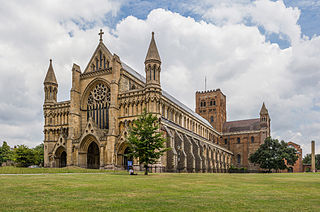
St Albans Cathedral, officially the Cathedral and Abbey Church of St Alban but often referred to locally as "the Abbey", is a Church of England cathedral in St Albans, England.

The Episcopal Diocese of Washington is a diocese of the Episcopal Church covering Washington, D.C., and nearby counties of Maryland in the United States. With a membership of over 38,000, the diocese is led by the Bishop of Washington, Mariann Budde. It is home to Washington National Cathedral, which is the seat of both the diocesan bishop and the Presiding Bishop of the Episcopal Church.

The Diocese of Southwark is one of the 42 dioceses of the Church of England, part of the worldwide Anglican Communion. The diocese forms part of the Province of Canterbury in England. It was created on 1 May 1905 from part of the ancient Diocese of Rochester that was served by a suffragan bishop of Southwark (1891–1905). Before 1877 most of the area was part of the Diocese of Winchester, some being part of the Diocese of London.

The Diocese of St Albans forms part of the Province of Canterbury in England and is part of the wider Church of England, in turn part of the worldwide Anglican Communion.
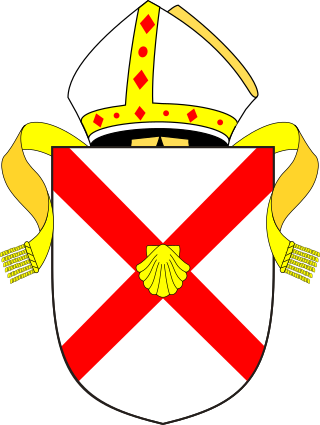
The Diocese of Rochester is a Church of England diocese in the English county of Kent and the Province of Canterbury. The cathedral church of the diocese is Rochester Cathedral in the former city of Rochester. The bishop's Latin episcopal signature is: " (firstname) Roffen", Roffensis being the Latinised adjective referring to Rochester.

The Diocese of London forms part of the Church of England's Province of Canterbury in England.
The Bishop of Hertford is an episcopal title used by a suffragan bishop of the Church of England Diocese of St Albans, in the Province of Canterbury, England. The suffragan See was created by Order in Council of 5 July 1889, but remained dormant until first filled in December 1967. The title takes its name after Hertford, the county town of Hertfordshire. The suffragan Bishop of Hertford, along with the suffragan Bishop of Bedford, assists the diocesan Bishop of St Albans in overseeing the diocese; the bishop has oversight of the archdeaconries of Hertford and St Albans, which cover the deaneries & parishes of Hertfordshire.

The Diocese of Guildford is a Church of England diocese covering eight and half of the eleven districts in Surrey, much of north-east Hampshire and a parish in Greater London. The cathedral is Guildford Cathedral and the bishop is the Bishop of Guildford. Of the two provinces of the church, it is in the Province of Canterbury.
John Warren Gladwin is a retired Anglican bishop. From 2004 to 2009, he was the Bishop of Chelmsford in the Church of England. He stands in the open evangelical tradition.
Tring School is a secondary school with academy status, with approximately 1,500 students aged between 11 and 18. It is located on Mortimer Hill on the east side of the town of Tring, Hertfordshire, England. Tring School includes a Sixth Form with over 300 students. The school was founded by the Church of England and is within the Diocesan Board of Education of the St Albans Diocese.
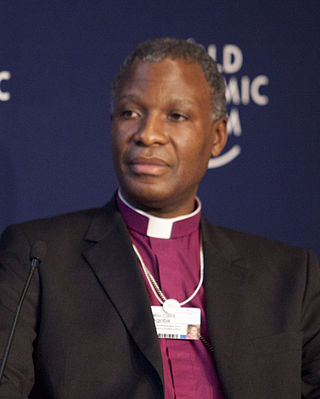
Thabo Cecil Makgoba KStJ is the South African Anglican archbishop of Cape Town. He had served before as bishop of Grahamstown.

The General Lying-In Hospital was one of the first maternity hospitals in Great Britain. It opened in 1767 on Westminster Bridge Road, London and closed in 1971. Lying-in is an archaic term for childbirth.
David John Farmbrough was Bishop of Bedford from 1981 to 1993.
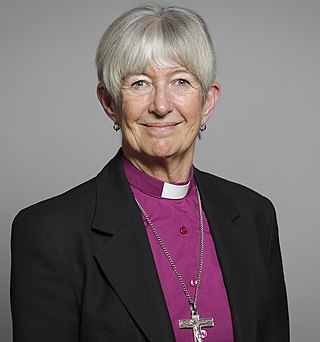
Christine Elizabeth Hardman is a retired British Anglican bishop and former Lord Spiritual. She served as Archdeacon of Lewisham, 2001–2008; Archdeacon of Lewisham & Greenwich, 2008–2012; and Bishop of Newcastle, 2015–2021.
Noel Michael Roy Beasley is a British Church of England bishop and epidemiologist. Since June 2022, he has been the Bishop of Bath and Wells; he was enthroned and started active ministry in that role in November 2022. From May 2015 to June 2022, he was Bishop of Hertford, a suffragan bishop in the Diocese of St Albans. From 2003 to 2010, he worked at Westcott House, Cambridge, an Anglican theological college, first as chaplain and then as a tutor and the college's vice-principal. During this time, he was also an academic of Imperial College London. From 2010 to 2015, he was Director of Mission for the Diocese of Oxford.
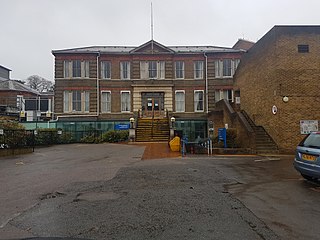
Hemel Hempstead Hospital is an acute District General Hospital in Hemel Hempstead, Hertfordshire operated by the West Hertfordshire Hospitals NHS Trust.

St Alban and St Stephen's Church or Ss Alban and Stephen Church is a Roman Catholic parish church in St Albans, Hertfordshire, England. Although it was built from 1903 to 1905, it was the third attempt to build a permanent local Catholic church in St Albans. It was designed by John Kelly of Kelly & Birchall in the Italian style. It is located on Beaconsfield Road next to the St Albans City railway station in the city centre.
















